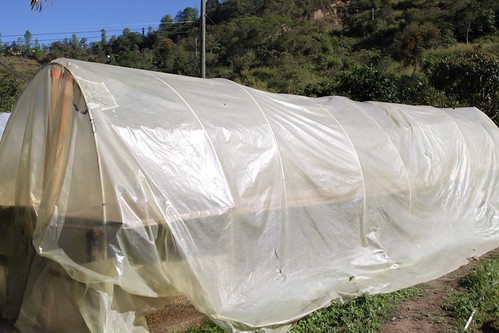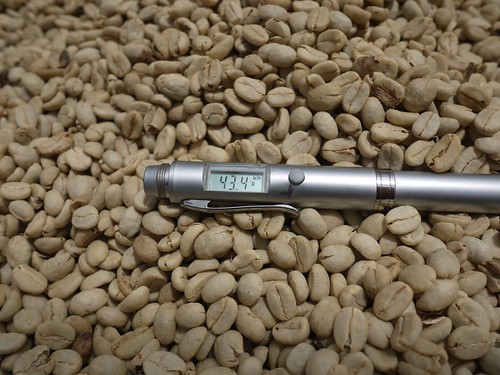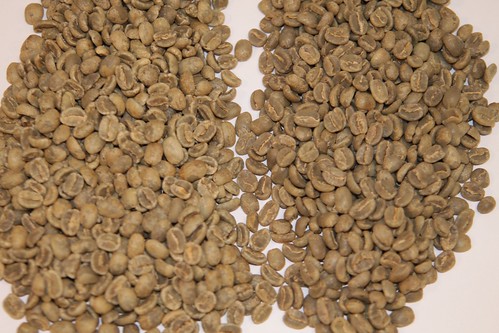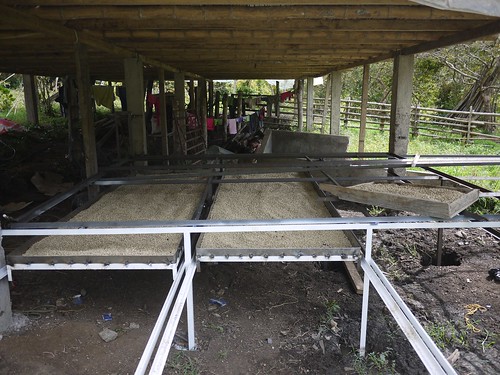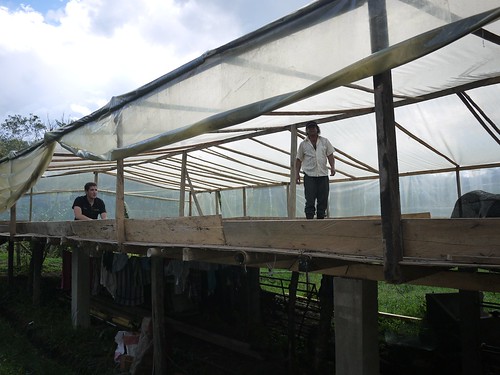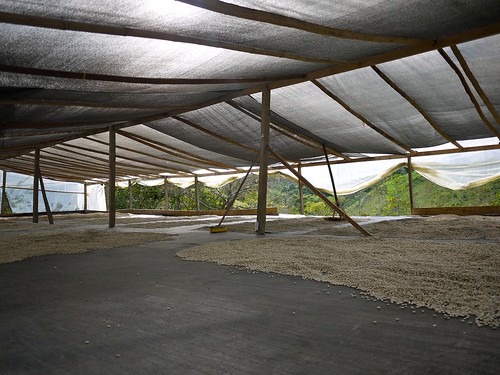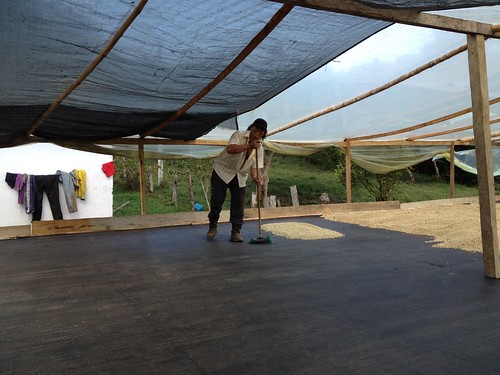The only reason we have not bought any Colombian coffee for the past 2 years is that the coffee tends to fade very fast. We bought some bags 2-3 years ago that faded and tasted woody after only a month in storage in Oslo. We had to sell the coffee for under cost price to a big client that agreed to buy all the coffee. Because of this we lost a lot of money and I have not been willing to take that risk one more time.
I started researching why some coffees fades faster than others. We vacuum packed green coffee, froze green coffee and tested a whole bunch of solutions in order to try to keep the coffee fresh. Obviously the best solution is to use the coffee fast, hence buy smaller quantities more often.
Still this did not solve all the issues with coffees fading. I wanted to get to the bottom of why this happens faster with some coffees (very often with Honduran and Colombian coffees) and why some coffees like Kenya and Ethiopia kept much better over time.
I started looking at how coffee is processed, but could not see a big difference except soaking which is used a lot in Africa, but not in Colombia and Honduras. ( I do believe soaking helps a lot as it helps even out the moisture content of the beans before drying.) The biggest difference I found was with the drying techniques. In Colombia and Honduras a lot of farmers use solar dryers. They look like green houses of plastic where the coffee is dried in under plastic cover to protect it from rain. (pictures below)
When you walk in to one of these solar dryers, it is incredibly humid and hot. The parchment coffee is also very hot and most producers I have visited who have these dryers do not move the coffee very often. This means the coffee is over heated and also dried very unevenly. Although the moisture content in a sample might be 12% and correct, you are only measuring the average moisture of the sample, meaning some beans might be over dried to 9% moisture and others might have a moisture content of 15%. My theory therefore led to thinking that improper drying is the biggest cause for coffees fading fast. I got a good indication that this theory was solid when we got our Honduran coffees from Nacimiento 2 years ago. The Nacimiento coffee kept it’s freshness for almost 8 months while another Honduran coffee was faded upon arrival of the container even though it was vacuum packed. The 2 coffees had been stored in the same warehouse and been shipped with the same container. The Nacimiento was packed in Grain pro (which is considered slightly less superior in keeping coffee freshness than the vacuum pack, but much more sustainable.) The Vacuum packed coffee had been dried in a solar dryer for less than a week, the Nacimiento had been dried on a patio with continuous stirring for about 12 days.
The drying techniques in Africa, where coffees tends to keep fresh for longer, most coffees are dried slowly with continuous stirring on raised beds. The coffee is covered during the hottest part of the day (because of the workers lunch break) and is not over heated. So my theory was that fast drying with hot temperatures in humid conditions is not good for the coffee’s shelf life. The solar dryers are in fact doing more damage to the coffee than good.
This was again confirmed when I measured Elias’s coffee laying in the solar dryer, as all the samples were reading very differently from the same batch of coffee. The parchment in his dryer reached over 43°C and the air in the dryer was about 45°C – 50°C and humid. Not a good way to dry coffee for sure. The high parchment temperatures can in addition to over drying also lead improper drying as the outer surface of the bean can crystallize. This makes it more difficult for the moisture to evaporate from the beans and the moisture in the center of the bean will start to migrate during storage leading to white edges on the green beans. (Left sample in picture below.) This has happened to one of our coffees in the past, which also tasted woody upon arrival, even though it was vacuum packed. Fortunately we got our money back for the damaged coffee.
Based on these experiences I was determined to help Elias to Improve his drying facilities. It doesn’t help to have the best coffees in the world if they taste woody when they arrive Norway. Elias had already started building some great drying beds in steel for the special lots. But they are expensive to build and unfortunately Elias does not have enough money to build enough beds to dry all his coffee on them. Hopefully in 1-2 years he will be able to dry most of his coffees this way.
I wanted Elias to be able to dry all his coffee in a good way, so we had a look at his solar dryer that he was already using. I decided to try to open up the side walls in order to get a better air circulation in the dryer while still protecting the coffee from rain by leaving the roof.
I also bough some black nylon net commonly used to give shade to nurseries, and we put it all over the ceiling in order to give shade for the parchment. I have had great experiences with implementing shade both for washed coffees and Naturals during drying on other farms in the past (Fazenda Ambiental Fortaleza & the Caballero’s farms) , so I knew this would work better. (Also Luis Fernando Velez told me some years ago that in the old days coffee was never dried in the sun, but only by using air.)
We also cleaned the patio properly and I bought some more plastic so that Elias could fix the some leaks in the roof over the patio.
The results were great. During the hottest day of the week, the parchment had a maximum temperature of 28°C while the air temperature in the top of the dryer (30 cm from the ceiling) held a temperature of 33°C. The air inside was cool and not humid at all. The coffee was still drying efficiently and I made Edilson, the farm manager, stir the coffee about every hour. I am certain that this will improve the shelf life of the coffee with many months.
We also had a look at the wear housing for the coffee at the Co-operatives, and decided to store all the coffees in Garzon instead of in Pital as the wear house in Garzon had a much lower storage temperature.
I will be presenting a lot of interesting results on drying coffee in my Nordic Barista Cup Lecture in Copenhagen in August. If you are interested in learning more about this, look for the video of the lecture that will be online after the event.

